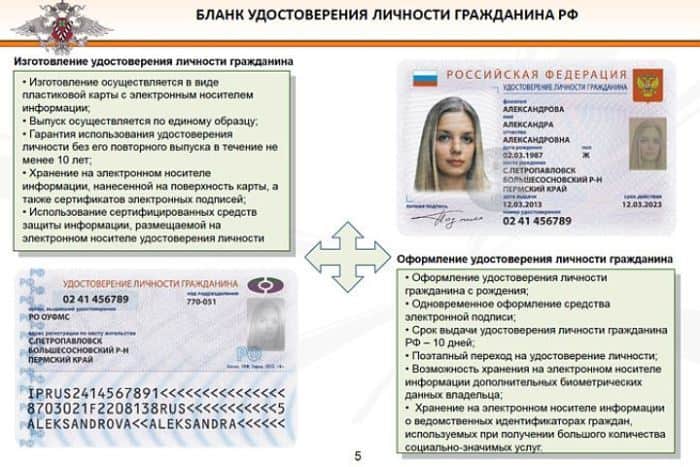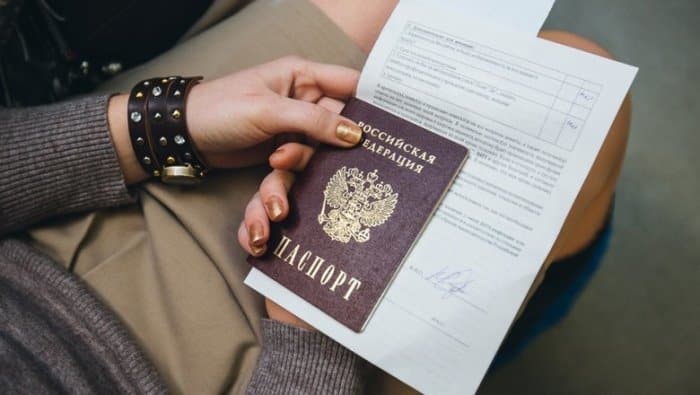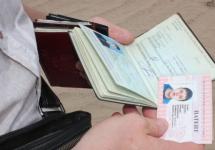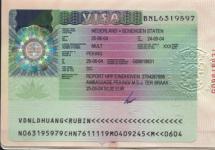The bill on the advisability of introducing electronic passports was approved back in 2013. But the terms of both pilot issuance and mass new documents have been postponed more than once. Nevertheless, it would not hurt the Russians to know what such a certificate will look like and when, where it can be obtained.
Only by 2017 did it become technically possible to bring the "electronic passport" project to life. During the preparation of this large-scale action, an ambiguous attitude to the innovation of the townsfolk was revealed, as well as some pitfalls in implementation. Therefore, it was decided to postpone the mass launch to March 15, 2018. Meanwhile, work on the preparation of unified registries and the solution of technical and psychological issues continues.
Universal card as a forerunner of the new passport
The UEC, which appeared back in 2011, became the prototype of the electronic identity card. Such a card fulfilled its task as a universal means of payment, and later on as a transitional element for the introduction of electronic identity cards.

The entire infrastructure used to service universal cards is being integrated into the new system, which will be the basis for plastic IDs. After all, a new passport is not just an identity document, but also a payment instrument.
However, the banking application on the new passport cards will not be available until the UEC is terminated.
In fact, the new electronic passport of a citizen of the Russian Federation will become a full-fledged replacement not only for a paper passport, but also for a universal card and other documents. Since the emission of the UEC ends in January 2017, it was originally planned to start issuing improved documents based on its infrastructure.
Interesting! It was not possible to implement the project before, since the domestic industry began to produce elements for such cards relatively recently, and the FSB prohibited the use of foreign ones.
But to start issuing documents, as planned from January 2017, did not work. This was announced to the RT television channel by presidential adviser German Klimenko. The official expressed the hope, according to RBC, that the extradition will nevertheless begin this year.

What will the new passport look like?
Externally, an electronic passport is an ordinary plastic card. Information about the owner on such a card is placed in visual and electronic form. Moreover, some information will be encrypted and understandable only when scanning a chip element.

Personal information is located on the front side of the card. Having taken the document in hand, you can read:
- Name of the owner;
- gender;
- place and date of birth;
- the date when the document was issued and how long the document is valid;
- passport ID.
There are also two photos here. A large 24x32 photo is located on the left and is made in color. The second, made using laser engraving, is smaller and located on the opposite side. The same electronic photo is available on the back of the card. The ID number is also duplicated here.
Special technologies for applying photographs to different layers of documents make it possible to additionally protect it from forgery.
On the reverse side of the card, in addition to the number and photo, it is mandatory to reflect:
- code of the authority that issued the plastic sample;
- TIN and SNILS (if desired by the owner);
- information about the guardians and representatives of the child, under the age of 14 years.
The main difference from paper media is the presence of a machine-readable record, consisting of numbers and letters, which certifies identity. Also, the presence of an electronic signature, biometric data entered at the request of a citizen.
Other important information such as a bank account, insurance number, and even blood types can be entered into the chip carrier.
Why do you need an e-passport?
When developing the project, international experience in personal identification was also taken into account. For the first time, personal identification was discussed in 2001.
In 2002, the New Orleans Agreement was signed, which was signed by 188 countries. They supported the idea of the Americans to introduce a new identification technology - face biometrics. This technology formed the basis of modern biometric and electronic passports.
The prevalence of multifunctional identification cards in the same Europe is uneven.

The issue of switching to new plastic identity cards in Russia has caused a lot of discussion and rumors.
Official government comments highlight the benefits:
- reducing the number of corrupted documents;
- increasing the terms of their use;
- reducing the level of document fraud.
In addition, new certificates with electronic media will allow you to quickly carry out various operations related to public services and payments.
When is it planned to completely abandon paper passports?
The transition to new identities will definitely be phased. At the first stage, it is planned to exchange documents only at the request of users.
Next will come the turn of citizens who have reached the age of 14 and receive a certificate for the first time. In the future, it is planned to start issuing such cards from birth.
The complete issuance of paper samples will cease by 2025. And already from 2030, an outdated paper passport will be considered invalid.
The procedure for issuing new electronic documents?
The deadline for issuing electronic documents was postponed by Decree of the Government of the Russian Federation No. 315 to March 2018. Currently, a unified database of Russians is being developed, which is necessary for the introduction of a new registration system.

And yet, you need to be ready to exchange a paper passport for an electronic one today.
Important parts of the procedure:
- The FMS will deal with the exchange and issuance of new cards.
- You can apply to the FMS both at the place of registration and at the place of residence.
- When issuing a plastic counterpart, a paper document is withdrawn.
- The plastic card will be valid for 10 years, after which it is subject to exchange.
- The term for issuing a new document at the place of registration does not exceed 10 days, at the location it cannot exceed 2 months.
- State. the fee may vary depending on the purpose of obtaining a new passport: replacement, receipt upon reaching the age of 14, loss.
On February 2, Decree of the Government of the Russian Federation No. 1214 dated November 18, 2016 came into force, allowing Russians to receive any identity cards at the regional offices of the MFC, including electronic IDs and biometric passports.
The changes also affected the fee charged, which, on the basis of Federal Law No. 401, will become 30% cheaper upon receipt of any identity documents.
Education: Higher economics, specialization - management in the industrial sector (Kramatorsk Institute of Economics and Humanities).
February 14, 2017 .



